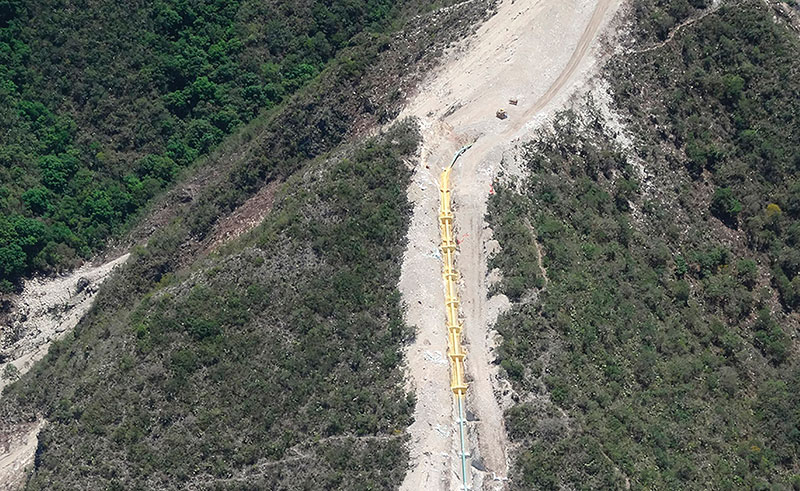August 2021, Vol. 248, No. 8
Spotlight on Mexico
NG Imports Grow, Pipeline Construction Slows
By Mauro Nogarin, Contributing Editor
According to the new quarterly report published by the Central Bank of Mexico, economic growth for 2021 will be between 5% and 7%, which compares favorably with the January edition, indicating between 2.8% and 6% growth.

In other words, the country’s economy remains stable and seeks to compensate for the negative effects left by the pandemic.
However, the hydrocarbon industry continues to face a series of difficulties such as oil production. This is reflected in the latest report from the National Hydrocarbons Commission (CNH), in which Pemex and its partners reached 1.7 MMbpd in April, representing a drop of 4,000 barrels compared to the month of March.
However, the operating indicators of the company, the production of hydrocarbons without its partners added to the fourth month of the year, showed a drop of 6,000 bpd compared to the previous month.
Natural gas production, according to data from the Secretary of Energy (SENER), showed 2.19 Bcf/d (62 MMcm/d) in March, which meant a variation of 31 MMcf/d (878,000 cm/d). When compared to the production of March 2020, the reduction was still higher, reaching 2,522 MMcf/d ([71 MMcm/d] -15%).
In short, the most troubling data showed the trend in natural gas production began to decline in 2010 and continues to this day.
Natural gas imports from the United States have made it possible to offset the decline in domestic natural gas production. In fact, since 2014, imports have increased constantly, reaching their maximum peak at the end of 2019, with an average of 5.75 Bcf/d (163 MMcm/d).
Since January 2020, when the economic situation of the country began to worsen until the pandemic began, imports reached an average of 5.7 Bcf/d (161 MMcm/d), declining in May when they were at 5.58 Bcf/d (158 MMcm/d).
Consumption of natural gas followed the same trend, declining at the beginning of 2019 and reaching the lowest peak in the month of May 2021, with an average of 7.8 Bcf/d (221 MMcm/d).
The constant increase in natural gas imports from the United States is confirmed by data from the Energy Information Administration (EIA), which shows natural gas exports to Mexico by pipeline accounted for 40% of all gross natural gas exports in 2019.
EIA data showed imports of natural gas from the United States in 2020 reached 5.3 Tcf (150 Bcm), of which 2 Tcf (57 Bcm) were shipped by Mexico. This was made possible with the construction of the Wahalajara system, in mid-2020, supplying the state of Guadalajara and central-western Mexico.
However, the Federal Electricity Commission (CFE) has decided to continue with its commitment to natural gas, with the construction of 13 new combined cycle plants by 2025, which is why the import volumes of natural gas will continue to grow, considering that 60% of electrical energy in Mexico is generated from this fuel.
The increase in imports is causing some concern to the government of President Andrea Manuel Obrador, particularly as data from the Ministry of Economy recently showed a negative balance of $145 million in foreign direct investment (FDI) destined to the transport of natural gas by pipelines during the first quarter of 2021.
Investments began to decrease significantly in 2017, falling from $2.27 billion to $472 million in 2018 (-79%) and declining $303 million (-35.8%) the following year.
In short, foreign companies began to abandon construction of new pipelines, because, at least in the short term, producers in Mexico do not have planned projects that significantly increase the national production of natural gas.
This, even though, according to a study by the CNH, the presence of conventional and unconventional natural gas has been demonstrated in the six Mexican oil provinces of Sabinas, Burro-Picachos, Burgos, Tampico-Misantla, Veracruz, Southeast and Deep Gulf of Mexico.





Comments